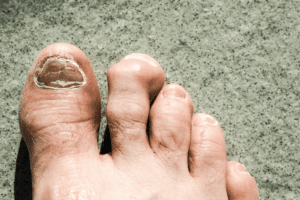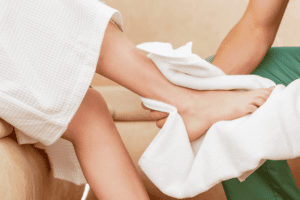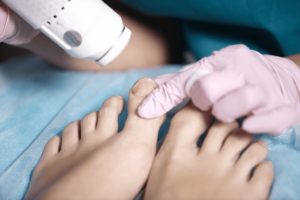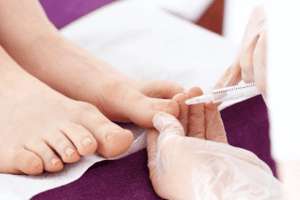Nail Fungus Prevention and Treatment: Say Goodbye to Unsightly Nails!
Introduction:
Nail fungus, medically known as onychomycosis, is a common condition that affects millions of people worldwide. It can lead to discolored, thickened, and brittle nails, causing discomfort and embarrassment. But fear not! In this blog post, we’ll explore effective strategies for preventing nail fungus and discuss various treatment options to help you regain healthy, beautiful nails.
Prevention Tips
1. Keep Your Feet Dry: Moist and warm environments create an ideal breeding ground for fungus. To prevent nail fungus, ensure your feet are thoroughly dried after bathing or swimming, especially between the toes.
2. Choose Breathable Footwear: Opt for shoes made of breathable materials like leather or mesh to reduce moisture and sweat buildup.
3. Practice Good Nail Hygiene: Trim your nails regularly, keeping them short and straight across. Avoid cutting too close to the skin, as this can create small openings for fungi to enter.
4. Wear Protective Footwear: In public places like communal showers, swimming pools, and gyms, consider wearing flip-flops or sandals to minimize direct contact with potentially contaminated surfaces.
5. Avoid Sharing Nail Tools: Sharing nail clippers, files, or other grooming tools can lead to the transmission of nail fungus. Keep your personal tools and disinfect them regularly.
Treatment Tips
1. Topical Antifungal Medications: Over-the-counter antifungal creams, lotions, and nail lacquers are available for mild cases of nail fungus. These medications can be applied directly to the affected nails.
2. Oral Antifungal Medications: For more severe cases, your doctor may prescribe oral antifungal medications, such as terbinafine or itraconazole. These medications work from within to target the fungus systemically.
3. Laser Therapy: Laser treatment is a non-invasive method that uses light to penetrate the nail and kill the fungus. It is effective in some cases and can be used alongside other treatments.
4. Surgical Nail Removal: In severe cases where the infection is causing pain and discomfort, partial or complete nail removal may be considered to allow direct treatment of the affected area.
5. Home Remedies: Some natural remedies, such as tea tree oil, vinegar soaks, or coconut oil, have shown antifungal properties. While they may not cure severe infections, they could be helpful in mild cases or as complementary treatments.
Seeking Professional Advice:
If you suspect you have nail fungus or if your condition worsens despite using home treatments, it’s essential to consult a healthcare professional. A dermatologist or podiatrist can provide an accurate diagnosis and recommend the most suitable treatment plan for your specific case.
Preventing and treating nail fungus requires diligence and patience. By following these prevention tips and seeking professional advice, you can significantly reduce the risk of nail fungus and improve the overall health of your nails. Don’t let nail fungus hold you back – take action today to regain healthy, beautiful nails and walk with confidence!
















